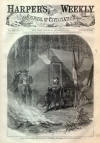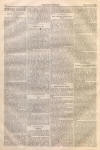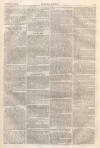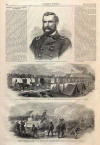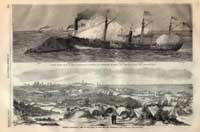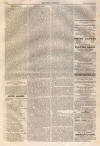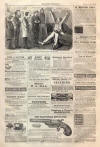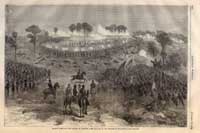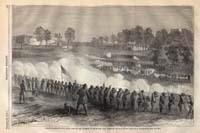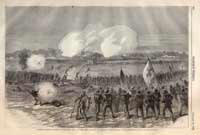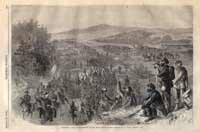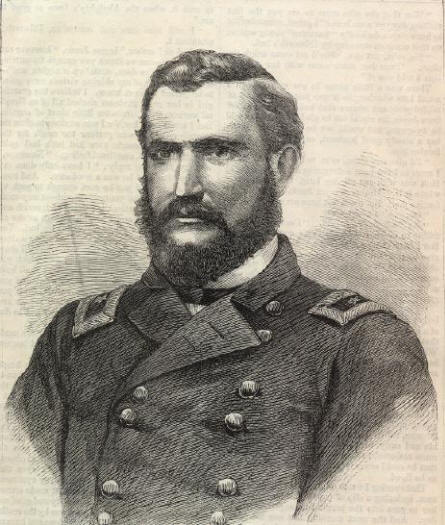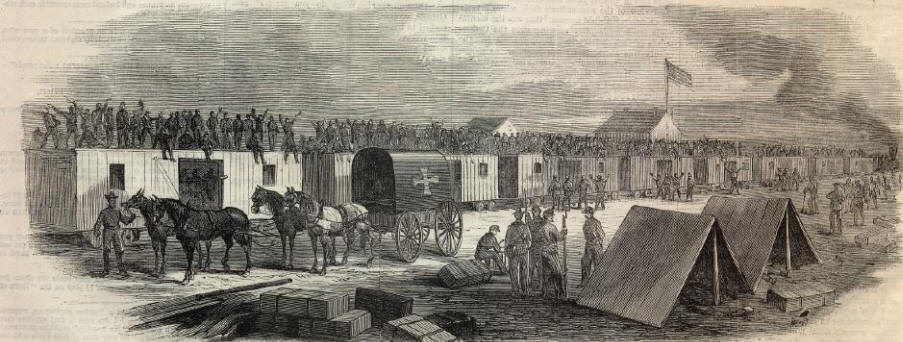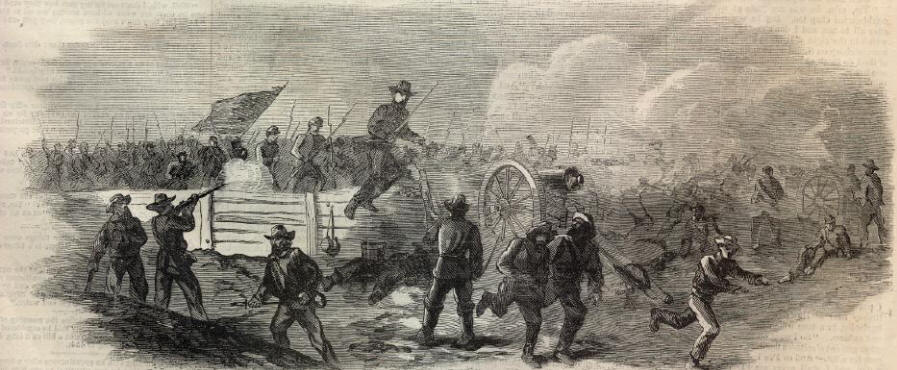|
This Site:
Civil War
Civil War Overview
Civil War 1861
Civil War 1862
Civil War 1863
Civil War 1864
Civil War 1865
Civil War Battles
Confederate Generals
Union Generals
Confederate History
Robert E. Lee
Civil War Medicine
Lincoln Assassination
Slavery
Site Search
Civil War Links
Civil War Art
Mexican War
Republic of Texas
Indians
Winslow Homer
Thomas Nast
Mathew Brady
Western Art
Civil War Gifts
Robert E. Lee Portrait
|
GRANTS CAMPAIGN AGAINST
RICHMOND.
WE give this week a number of
sketches illustrating General GRANT'S recent movements against the rebel
capital. These movements are but a repetition on a more extended scale of the
strategy hitherto employed by the Lieutenant-General.
General GRANT is confident of final success.
Yet he appears never to expect success as the certain consequence of any
individual movement. When he pushed out both of his flanks a few weeks ago he
intended either to get an important position on the north bank of the James, or
to obtain possession of the Weldon Road. He succeeded then in the latter of
these two objects, while he failed in the former. When
SHERIDAN had beaten EARLY in the Valley, and it
became certain that
LEE would strengthen the latter, then it was
GRANT'S opportunity to advance again. As before, he sent one portion of his army
to attack the rebel left, and at the same time pushed out westwardly against the
rebel right.
General BUTLER'S army was
dispatched to the north side of the James. The position first attacked by this
army was the rebel line of works at Chapin's Farm, forming the outermost or
third line of the defenses of Richmond. The first work of any considerable
importance encountered on this line was Fort Harrison. On
page 676 we
illustrate the capture of this fort by the Eighteenth Corps.
General ORD, crossing at Aiken's Landing,
advanced through a wooded country on the Varina Road, and having driven in the
rebel pickets from their outposts attacked the fort. The position attacked was
one of considerable strength, and mounted with heavy artillery. It was situated
just below
Fort Darling and was built on elevated ground,
but was not very strongly supported. During the attack reinforcements were
arriving from Richmond, but they came too late to be of any assistance at this
point, though they aided in resisting ORD'S further advance, thus preventing the
capture of Fort Gilmer. Two or three hundred prisoners and sixteen guns were
taken at Fort Harrison. General ORD was slightly wounded in the attack, and
General BURNHAM was killed.
The Sketch on
page 677
illustrates the battle of the 30th, in which
General LEE attempted the recapture of Fort
Harrison. Both the Eighteenth and Tenth Corps were engaged. The rebels attempted
to break through between the two corps, but were repulsed with heavy loss. Two
assaults were made : the first was made awkwardly ; the
second without promptness; and
both were disastrous to the assailants.
The illustration on our first
page represents General BUTLER bivouacking at the junction of the Varina and New
Market Road, after the important victory of the 29th. As a suggestion of his
triumph, his tent is decorated with battle-flags captured from the enemy in
battle.
On this page we give a portrait
of General GODFREY WEITZEL, who succeeded General ORD in the command of the
Eighteenth Corps. This officer distinguished himself above all others in the
campaign on the Lower Mississippi under Generals BUTLER and
BANKS. He received a military education at West
Point, where he graduated in 1855 with the rank of Second Lieutenant of
Engineers. He is a native of Ohio. He was Chief Engineer in the Department of
the Gulf in 1862. After the battle at Baton Rouge, Louisiana, in August of that
year, he was appointed Brigadier-General. General WEITZEL is distinguished for
the same kind of talent which characterized McPHERSON.
The illustrations given below and
on page 680
relate to the operations of General WARREN'S Corps against the rebel right. This
movement was one day later than that north of the James. LEE had ordered a good
portion of his army to the left, to retake the positions occupied by General
BUTLER. Thus his right was weakened ; and taking advantage of this, portions of
the Fifth and Ninth Corps were advanced toward the Poplar Grove. Poplar Grove is
on the South Side Railroad, fifteen miles from the Weldon Road. The first
attack, which is the one illustrated on page 680, was made about noon, on a
rebel redoubt three miles from the Weldon Road, at Peebles's Farm. This work was
carried, and four guns captured. The rebels were driven back to their inner
lines. We illustrate below two incidents which occurred in connection with the
battle on the 30th. While it was being fought a large number of new recruits
arrived on the field from the North. This, as our artist remarks, gave great
encouragement to the soldiers, assuring them that they were not left alone to
fight their country's battles. The other incident to which we allude is one
which excites much admiration and comment in the army. When the First Division
of the Fifth Corps charged the rebel battery, Colonel WELCH, commanding the
Sixteenth Michigan Volunteers, led his men up to the work, leaped into the fort,
sword in band, and charged the rebels at their guns. He was killed shortly
afterward, but his men will never forget that leap.
MAJOR-GENERAL GODFREY WEITZEL.--[PHOTOGRAPHED BY
ANTHONY.]
GRANT'S CAMPAIGN—ARRIVAL OF RECRUITS DURING THE
FIGHT AT PEEBLES'S FARM, SEPTEMBER 30, 1864.—[SKETCHED BY C. H. CHAPIN.]
GRANT'S CAMPAIGN—COLONEL WELCH LEAPING INTO THE
REBEL WORKS, SEPTEMBER 30, 1864.—[SKETCHED BY C. H. CHAPIN.]
|
